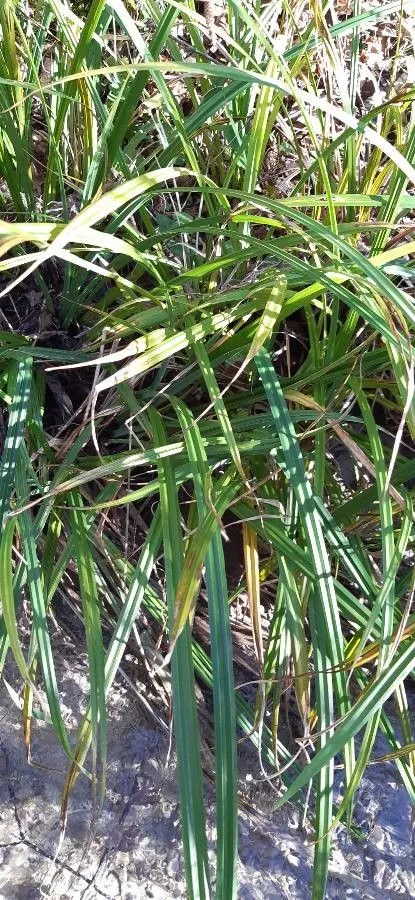
Author: Host
Bibliography: Icon. Descr. Gram. Austriac. 1: 64 (1801)
Year: 1801
Status: accepted
Rank: species
Genus: Carex
Vegetable: Unknown
Observations: WC. & S. Europe
Russet sedge, known scientifically as Carex parviflora, is an intriguing species of sedge that is a part of the Cyperaceae family. First described by Host in 1801 in the text Icones et Descriptiones Graminum Austriacorum, volume one, page 64, this plant has since captivated botanists and plant enthusiasts with its unique characteristics and adaptability.
Native to various regions of Western and Southern Europe, Carex parviflora thrives in its natural habitat. The plant’s robust nature allows it to survive in diverse environmental conditions, making it a common sight in the wild landscapes of these areas.
The Russet sedge is distinguished by its intricate structure, with fine, grass-like leaves and a compact form. The foliage often exhibits a russet or reddish hue, which is particularly striking during certain seasons and adds a distinct visual appeal to its surroundings. This characteristic color has contributed to its common name and makes it relatively easy to identify in the field.
As a member of the Cyperaceae family, Carex parviflora shares many traits with other sedges, including its sedge-like flower spikes and clumping growth habit. These plants typically prefer moist, well-drained soils and can often be found in meadows, marshes, and along the banks of streams and rivers. Such environments provide the ideal conditions for their growth and proliferation.
Russet sedge plays a significant role in its ecosystem, contributing to soil stabilization and providing habitat for various wildlife species. Its presence indicates healthy, functioning wetland habitats, and it is often included in conservation efforts aimed at preserving native vegetation and preventing soil erosion.
In landscaping and natural garden designs, Carex parviflora can be a valuable addition due to its aesthetic appeal and environmental benefits. Gardeners and landscape architects who incorporate this sedge into their plans appreciate its resilience and the textural contrast it offers when paired with other plant varieties.
Overall, Carex parviflora is a noteworthy species within the Cyperaceae family, known for its distinctive russet-colored foliage and its adaptability to various European regions. Its enduring presence in the wild and its ecological value underscore the importance of preserving such native plant species for future generations.
Deu: kleinblütige segge
Pol: turzyca czarna
En: Russet Sedge
Ca: Càrex fosc
Cs: Ostřice malokvětá
Fr: Laîche à petites fleurs, Laiche à petites fleurs
De: Kleinblütige Segge
It: Carice nera
Pl: Turzyca czarna
Taken Aug 14, 2017 by Yoan MARTIN (cc-by-sa)
Taken Aug 14, 2017 by Yoan MARTIN (cc-by-sa)
Taken Aug 14, 2017 by Yoan MARTIN (cc-by-sa)
Taken Aug 14, 2017 by Yoan MARTIN (cc-by-sa)
Taken Aug 14, 2017 by Yoan MARTIN (cc-by-sa)
Taken Aug 14, 2017 by Yoan MARTIN (cc-by-sa)
Taken Jul 10, 2015 by Tela Botanica − Yoan MARTIN (cc-by-sa)
Taken Aug 14, 2017 by Yoan MARTIN (cc-by-sa)
Taken Jul 6, 2015 by Tela Botanica − Yoan MARTIN (cc-by-sa)
Taken Jul 6, 2015 by Tela Botanica − Yoan MARTIN (cc-by-sa)
Taken Jul 6, 2015 by Tela Botanica − Yoan MARTIN (cc-by-sa)
Taken Jul 10, 2015 by Tela Botanica − Yoan MARTIN (cc-by-sa)
Taken Aug 15, 2013 by Photoflora – Jean-Luc TASSET (©)
Taken Aug 13, 2021 by Christophe S (cc-by-sa)
Taken Jul 6, 2015 by Tela Botanica − Yoan MARTIN (cc-by-sa)
Taken Jul 10, 2015 by Tela Botanica − Yoan MARTIN (cc-by-sa)
Taken Jul 10, 2015 by Tela Botanica − Yoan MARTIN (cc-by-sa)
Taken Jul 10, 2015 by Tela Botanica − Yoan MARTIN (cc-by-sa)
Taken Feb 15, 2020 by Meloni Emanuele (cc-by-sa)
Taken Feb 15, 2020 by Meloni Emanuele (cc-by-sa)
Taken Feb 15, 2020 by Meloni Emanuele (cc-by-sa)
Taken Feb 15, 2020 by Meloni Emanuele (cc-by-sa)
Taken Jan 1, 1970 by Photoflora – L’Abbé COSTE (©)
Taken Jul 15, 2010 by Photoflora – Benoit BOCK (©)
Taken Jul 15, 2009 by Photoflora – Benoit BOCK (©)
Taken May 15, 2005 by Tela Botanica − Laurent PETIT (cc-by-sa)
Family: Myrtaceae Author: (F.Muell.) K.D.Hill & L.A.S.Johnson Bibliography: Telopea 6: 402 (1995) Year: 1995 Status:…
Family: Rubiaceae Author: Pierre ex A.Froehner Bibliography: Notizbl. Bot. Gart. Berlin-Dahlem 1: 237 (1897) Year:…
Family: Sapindaceae Author: Koidz. Bibliography: J. Coll. Sci. Imp. Univ. Tokyo 32(1): 38 (1911) Year:…
Family: Asteraceae Author: A.Gray Bibliography: Pacif. Railr. Rep.: 107 (1857) Year: 1857 Status: accepted Rank:…
Family: Fabaceae Author: Medik. Bibliography: Vorles. Churpfälz. Phys.-Ökon. Ges. 2: 398 (1787) Year: 1787 Status:…
Family: Aspleniaceae Author: (Cav.) Alston Bibliography: Bull. Misc. Inform. Kew 1932: 309 (1932) Year: 1932…